Aspern-Essling
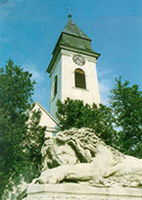 While
Aspern was badly damaged during the battle and had to be
rebuilt, it follows the old village's layout. There is a
very interesting museum in the village, and it's open by
appointment.
While
Aspern was badly damaged during the battle and had to be
rebuilt, it follows the old village's layout. There is a
very interesting museum in the village, and it's open by
appointment.
There
has been a lot of industrial development between Aspern
and Essling and the defensive line between them is almost
non-existent.
The
most recognisable landmark in Essling is the Granary, which
although modernised, still bears the scars of battle.
The
villages lie just north-east of Vienna. 20 minute drive.
Battle
Description
Austerlitz
(Slavkov)

The
battlefield over which Austerlitz was fought survives remarkably
well today, although the Santon is fighting a major battle
to hold over the encroaching suburbs of Brno (formerly Brunn).
The
Pratzen Heights are now topped by a large monument to the
dead and in the nearby village of Kovalovice there is a
chapel to fallen Russian soldiers.
Other
memorials include the castles at Slapanice (Schlappanitz)
- which during the battle acted as Marshal Soult's command
quarters and is now a school - and Sokolnitz, now a factory.
There
are small museums in Lapanz Markt and Prace (Pratzen).
Those
wishing to see the Satchan Lake will be disappointed as
that has been drained to increase farmland.
144
km (90 miles) north of Vienna. 2 hours drive.
Battle
Description
Wagram
(Deutsch-Wagram)
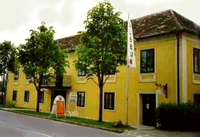 This
crucial-battle contains many attractions for Napoleonic
enthusiasts including the Markgrafneusiedl tower, the scene
of heavy fighting, and its nearby church, the crypt of which
is piled with skulls and bones.
This
crucial-battle contains many attractions for Napoleonic
enthusiasts including the Markgrafneusiedl tower, the scene
of heavy fighting, and its nearby church, the crypt of which
is piled with skulls and bones.
In Deutsch-Wagram
itself there is a terrific museum in a yellow-walled building
that served as Archduke Charles' headquarters during the
battle.
The
church in the town is worth visiting as are the numerous
plaques pointing out key points of the battle.
Another
interesting and emotion-feeding site is the Soldatenkreuz,
a small cemetery, at Ulrichskirchen.
16
km (10 miles) north-east of Vienna. 30 minutes drive.
Battle
Description
Photograph
from The Napoleon Series
Schonbrunn
Palace
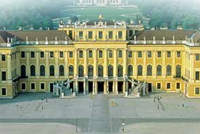 The
summer palace of the Austrian Hapsburgs, Schonbrunn is a
magnificent place to visit and has been listed on the World
Heritage register.
The
summer palace of the Austrian Hapsburgs, Schonbrunn is a
magnificent place to visit and has been listed on the World
Heritage register.
It
features superb gardens and has the world's oldest - and
still operating - zoo.
Occupied
twice by Napoleon Bonaparte - in 1805 and 1809 - Schonbrunn
also hosted the Congress of Vienna.
West of Vienna. 1 hour drive.
Ratisbon
(Regensburg)
A
major trading centre for hundreds of years, Regensburg was
the scene of a desperate clash between French and Austrian
forces in 1809.
Two
major assaults by the French were repulsed before a third,
personally led by Marshal Jean Lannes was successful.
The
city is full of historic atmosphere and its walls make it
well worth a visit. The Steinerne bridge, the only protected
crossing across the Danube, still has its 12th Century foundations.
379
km (237 miles) west of Vienna. 4 hours 25 minutes drive.
198 km (124 miles) north-east of Ulm. 2 hours 50 minutes
drive.
27 km (17 miles) north-east of Abensberg. 20 minutes drive.
Battle
Description
Eckmuhl
(Eggmuhl)
The
battlefield of Eckmuhl is a good one to visit as all of
the major landmarks are easily recognisable.
The
town's castle is regarded as being a fine place for Napoleonic
enthusiasts to see.
22
km (14 miles) south of Regensburg. 20 minutes drive.
42 km (26 miles) north of Landshut. 40 minutes drive.
104 km (65 miles) north of Munich. 1 hour 35 minutes drive.
382 km (239 miles) west of Vienna. 4 hours 30 minute drive.
Battle
Description
Abensberg
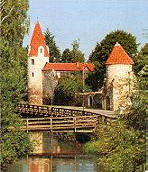
Being
a widely fought engagement, the clash around Abensberg is
not an easy one to navigate but, with patience, there are
numerous points of interest amid picturesque countryside.
405
km (253 miles) west of Vienna. 5 hours 5 minutes drive.
176 km (110 miles) north-east of Ulm. 2 hours 30 minutes
drive.
27 km (17 miles) south-west of Regensburg. 20 minutes drive.
91 km (57 miles) north of Munich. 1 hour 24 minutes drive.
Battle
Description
Ulm
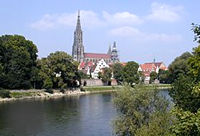
The
canals and old town of this important Napoleonic site make
it a very pleasant place to visit. Ulm was where Napoleon
Bonaparte surrounded and forced to surrender a large Austrian
army and was the staging point for his campaign that led
to Austerlitz.
528
km (330 miles) west of Vienna. 6
hours 24 minutes drive.
74 km (46 miles) west of Augsburg. 54 minutes drive.
176 km (110 miles) south-west of Abensberg. 2 hours 30 minutes
drive.
185 km (116 miles) west of Landshut. 2 hours 4 minutes drive.
136 km (85 miles) west of Munich. 1 hours 37 minutes drive.
Battle
Description
Landshut
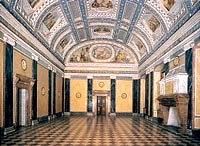
Visitors
to riverside Landshut will be able to see numerous commemorative
plaques detailing the deaths of senior officers in houses
near the waterway.
360
km (225 miles) west of Vienna. 4 hours 27 minute drive.
64 km (40 miles) south of Regensburg. 55 minutes drive.
186 km (116 miles) east of Ulm. 2 hours 4 minutes drive.
70 km (44 miles) north-east of Munich. 1 hour drive.
Battle
Description
Munich
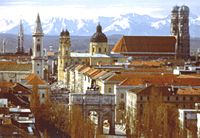 Perfect
home base for people visiting key battlefields of the 1809
campaign along the Danube.
Perfect
home base for people visiting key battlefields of the 1809
campaign along the Danube.
136
km (85 miles) east of Ulm. 1 hours 37 minutes drive.
70 km (44 miles) south-west of Landshut.
1 hour drive.
91 km (57 miles) south of Abensberg. 1 hour 24 minutes drive.
104 km (65 miles) south of Eggmuhl. 1 hour 35 minutes drive.
118 km (74 miles) south of Regensburg. 1 hour 43 minutes
drive.
Hohenlinden
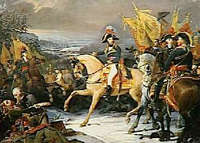
The
battle of Hohenlinden, together with Marengo, dealt the
Austrians a military death blow that led to their surrender
in 1800.
40
km (25 miles) east of Munich. 28 minutes drive.
Battle
Description



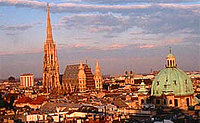
 While
Aspern was badly damaged during the battle and had to be
rebuilt, it follows the old village's layout. There is a
very interesting museum in the village, and it's open by
appointment.
While
Aspern was badly damaged during the battle and had to be
rebuilt, it follows the old village's layout. There is a
very interesting museum in the village, and it's open by
appointment. 
 This
crucial-battle contains many attractions for Napoleonic
enthusiasts including the Markgrafneusiedl tower, the scene
of heavy fighting, and its nearby church, the crypt of which
is piled with skulls and bones.
This
crucial-battle contains many attractions for Napoleonic
enthusiasts including the Markgrafneusiedl tower, the scene
of heavy fighting, and its nearby church, the crypt of which
is piled with skulls and bones. The
summer palace of the Austrian Hapsburgs, Schonbrunn is a
magnificent place to visit and has been listed on the World
Heritage register.
The
summer palace of the Austrian Hapsburgs, Schonbrunn is a
magnificent place to visit and has been listed on the World
Heritage register.


 Perfect
home base for people visiting key battlefields of the 1809
campaign along the Danube.
Perfect
home base for people visiting key battlefields of the 1809
campaign along the Danube. 